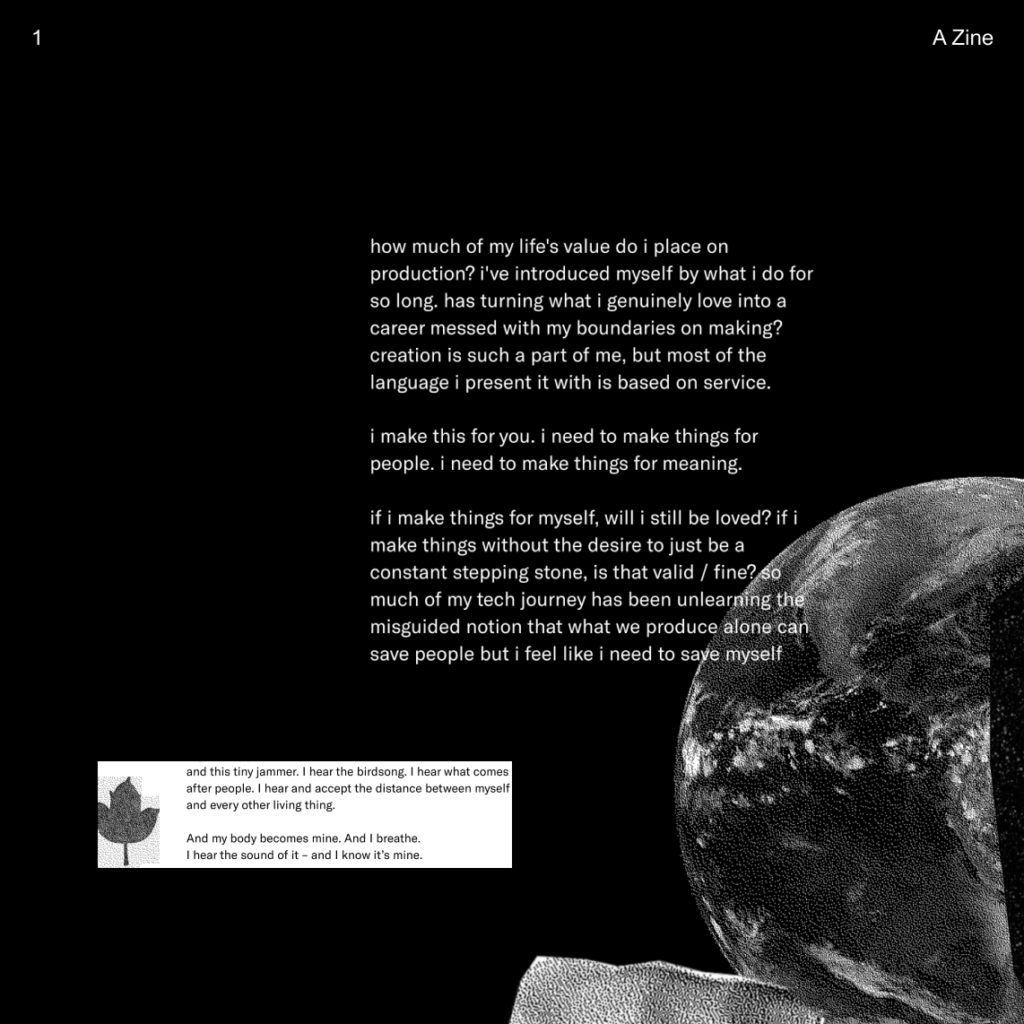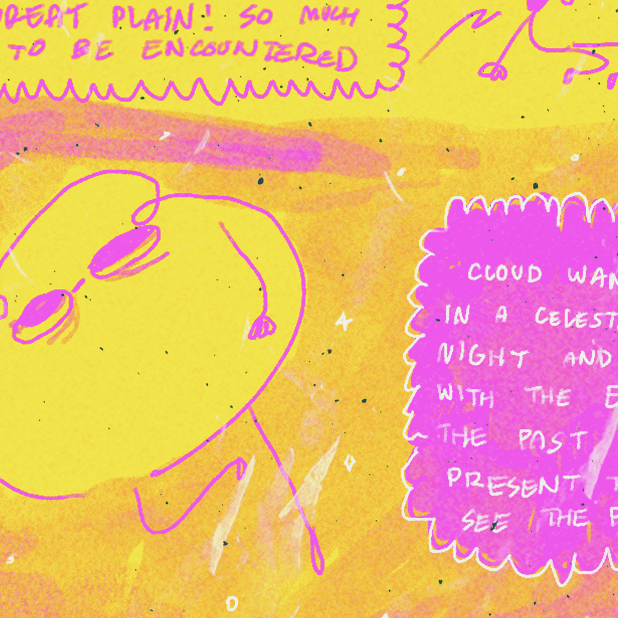On a weeklong Thanksgiving Break I quit nearly everything and decided to try and start saving myself.
More specifically, I’ve been trying to grapple with my relationship with making and also ‘test’ myself to see if I was still comfortable just… creating. I’ve been feeling a lot of things that have no clean resolution, and whenever I felt this way previously I would sit on my desk and glance to-and-from the clock, until I would have some output I was proud of. And that was euphoric, almost.
1 – all the funerals for my past selves
a zine on knowing myself
3 essays, 32 pages, ~4.3k
pdf booklet
How do we remember people? I wandered around Grove Street Cemetery from 4AM on Sunday to find some answer to this. It is a straight and short walk from my apartment. Most epitaphs defined these people by their jobs or relationships – do I have the latter? Once bench read “what you leave behind is not what is engraved in stone monuments, but what is woven into the lives of others.” For the past decade, my life’s value has centered on what I create. Artifacts where I sometimes misguidedly deemed myself some martyr in service of others trying to prove that what I say, write, design, or code. A decade or so of self-commodification and ensuring that I present myself palatably. Where did I go? / All my fears are circling back. One of the essays touch on the fears I had as a teenager that I dismissed of that twisted view of design saviorism, this obsession with signaling my existence (and how much of that becomes self-performance, and what self-performance even constitutes), the violence of my constant reconstruction. / Another touches on dissociation and how underneath all this, I believe I need grief to function. Always need to lack something | contentment is an impossible, sick feeling | no good things have happened when I am making. / I just want a single witness to what I have become.
Other thoughts: I’ve been so fascinated with designing to multiply making & production but how much have we considered the end-of-life experience? How do we remember people?
(my nail polish is chipped…… thank you cashier at art store for not scanning half of the paper i bought for this and saying you like my aphex pin twin. i am thinking of u)
2 – if i fall into a very dense cloud, can i die?
a shitty comic, 15 pages
http://chia.design/cloud

i dont know how to explain this one. i do believe that life is largely about extremes of suffering and happiness (and in experience, more of the former than the latter) and beauty best found in the smallness of the moments in between –– but when happens when you accept this stillness and joy and it is no longer enough? also very similar themes to the first.. identity crisis and all baby.
I don’t know how to draw comics and I have never made one before and u can tell. this was very fun though, and I think I will try to make more! I have been trying to make the most out of my Procreate purchase, tyvm
Other thoughts: i love clouds. i want to start like a lil newsletter exchange where people send in what the clouds look like where they are and u get a new cloud in ur inbox each day. dianne, you gave me that silly cloudwatcher’s book sometime in middle school back when I used to name everything I loved after clouds (one of my earlier websites – before we went by naming things after ourselves – was called cirrumilus! a mix of cirrus and cumulus! a genius name) and it has never left me since. If not on my sidetable, it’s tucked in some shelf/bag that will go with me wherever I venture.
There is no morale or finding in this piece. Somber listlessness is a relatively new feeling to me. When I was younger, I had trouble discerning the beauty in the mundane, especially as a product of my environment: sitting in my bedroom all day, three hour car rides to Catholic school, walking around the same streets and urban environments but never through neighborhoods––only ever through malls. I saw the world through screens again, but that only taught me how to think and how I *should* feel rather than me actually experiencing a moment, and in utter clarity and understanding, form some form of reaction myself. On a trip in another country, I broke down sobbing at the view on a train station that overlooked rural vastness and nothingness. My relationship with the world has changed since living alone; I look at the gloomy New Haven sky and flood with disbelief as I bask in something that I know I have no control over. I see flowers peeking at the slips of the sidewalks, kick over cigarette butts that fight for space with sprouses (just kidding, I pick them up and throw them), and in general am having a grand time amidst parking lots shared on Brutalism Appreciation Facebook groups as the sun blisters the pools of my arms.
And yet I am living through something that I never had, that I never dreamed of in my youth that almost seems so sacredly wondrous that it could fix me––but it’s not enough. It sounds reductive, but I was very confident that the sadness inside of me could be something easily fixed with some affinity for nature or some other ‘simple’ thing; growing up in Manila would be the perfect backstory, I join in chorus of plain aphorisms about living and all the quotes click. The main character is witness to so much beauty after some abyssal dread, they die accidentally and without choice –– punishing them for their thoughts at the moment of understanding, depriving them of the goodness left in the world. (This is my understanding of Tom Ford’s A Single Man.) Like once one reconciles with their grief, the story is over; they become someone consumed by this outlook that has driven their life, with no chance at enkindling themselves in the goodness present in the world.
Those are just wandering thoughts about what this comic (with all its poor sense of linearity, unplanned dialogue/writing) attempt to reflect. My favorite comics are Obelisk and Metronome, shamefully Andrew Hussie’s earlier work, Jon-Michael Frank, and Cate Wurtz’ work –– I’d love to be exposed to more!
3 – in threes

a little website to introduce random threes of myself and experiment with what lists as presentation looks like









